What Is Murders in the Rue Morgue the First of
Edgar Allen Poe's The Murders in the Rue Morgue: A Nutshell Study of Unexplained Death and More
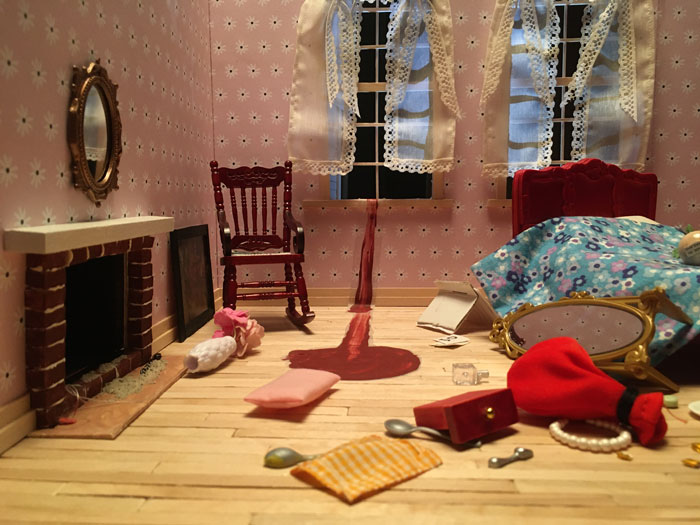
As Halloween approaches, we thought our readers would enjoy a unique educational treatment of Edgar Allen Poe's short story The Murders in the Rue Morgue. Poe's Rue Morgue tale is considered the first of its kind; the locked-room detective story was published in 1841. For those unfamiliar with the story, it's about the seemingly unexplainable murders of two women in their locked-from-the-inside Paris apartment. The reader is taken through a series of observations made by the story's narrator and companion, detective C. Auguste Dupin, who paints a vivid picture of the crime scene, and eventually solves the murder mystery.
In this post, we have recreated The Murders in the Rue Morgue crime scene in dollhouse miniature, 1 inch to 1 foot (1:12) scale. This type of recreation is known as a Nutshell Study of Unexplained Death. In addition to the crime scene recreation, we have added our own twist to the story by examining some of the trace evidence that had been left behind by the murderer, and present a speculation as to the identity of Poe's main character, C. Auguste Dupin. So as not to spoil the story for those who have not read it, we will continue our conversation on the Hooke College LinkedIn page where you can post additional comments and thoughts.
Now, let's take a closer look at The Murders in the Rue Morgue crime scene.
Recreating the Room Where it Happened
The idea for this article came about after reading last year's publication by Bianca L. Brandon in the Journal of Forensic Science Education, where she wrote "Building miniature crime scenes offers a cumulative, content-rich, project-based learning experience for introductory forensic science students." Students from Brandon's Staten Island Technical High School's forensic science class created Nutshell Studies of Unexplained Death, dollhouse-sized recreations at a 1:12 scale of real crime scenes. The Nutshell Studies of Unexplained Death were first developed by Frances Glessner Lee in the 1930s. Her dollhouse crime scene recreations served as tangible training tools for detectives and crime scene investigators. Lee would eventually become a famous forensic scientist, known for her meticulously handcrafted miniature dollhouse depictions of real-life crime scenes. Recently, there has been a resurgence of interest in Lee's Nutshell Studies in the popular media. In 2017, her collection of rooms were the focus of an exhibit at the Renwick Gallery of the Smithsonian American Art Museum, and were also featured as a key crime-solving tool in ABC's television crime drama "NCIS: Welcome to the dollhouse" (2020, Episode #17).
As pointed out in Brandon's paper, recreations of real-life crime scenes have useful educational value, especially in the area of forensic sciences by using a project-based learning approach. Students in Brandon's course had to conduct research on the death investigation and crime scene analysis. They also had to include, "background information about the case, the design and building process…and other laboratory results depending on the specifics of the case."
In our case, recreating a famous fictitious crime scene such as Poe's The Murders in the Rue Morgue should serve as a similar project-based learning event with its own unique educational mash-up of subjects, such as classic literature, historical architecture, interior design, crime scene analysis, and in this case, forensic trace evidence analysis.
In beginning to construct the Nutshell Study for the Rue Morgue murders, I went back through the story and gathered all of the references to the crime scene room in order to create a reasonable facsimile of the aftermath. I also referred to architectural representations of Paris apartments from that time period, as well as artistic renderings, images from graphic novels, and movie adaptations from the story available on the internet, such as the examples below:
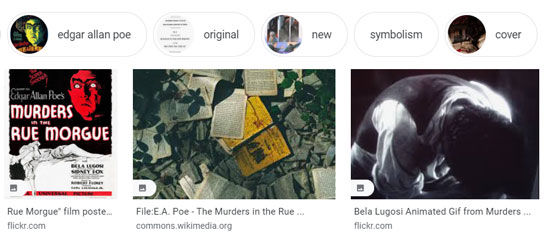
To construct the Rue Morgue Nutshell Study, I followed many of the ideas and directions presented in Brandon's paper, but made a few modifications in the construction materials used. In Brandon's article, the students use ¾ inch thick pieces of plywood for the base and outer walls of the Nutshell, and used craft wood for some of the interior walls. Since I was only interested in recreating a single room and not the entire layout of the Paris apartment, I opted to use mostly craft wood for the base, and a combination of balsa wood and scrapbooking paper for the exterior and interior walls. This allowed me to easily cut out openings in the exterior walls for some of the key features in the story such as the fireplace and the two windows in the room.
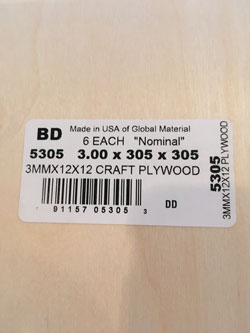
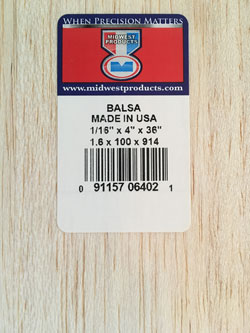
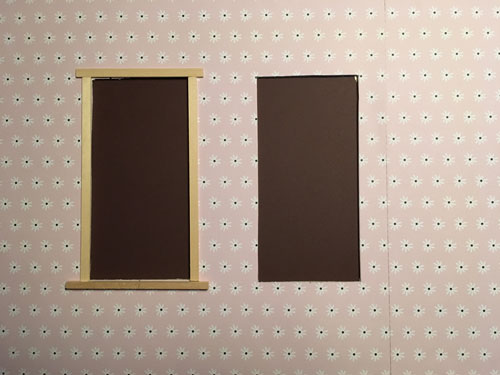
As you can see from the above photograph, the interior of the room features a wallpaper pattern from some scrapbooking paper. I cut one edge of the paper so that the pattern would closely match up with the factory edge of a second piece of paper, using a 12-inch paper trimmer. This gave the wall a seamless appearance similar to actual wallpaper.
The hardwood flooring was constructed from craft sticks, laid down randomly to give the floor a more realistic appearance. The sticks were then glued to a piece of balsa wood so that the floor could be easily moved as a whole piece.

I used craft wood sticks, along with thicker pieces of wood stock, to make the window frames and baseboard trim throughout the room. Another key feature of the room's architecture are the ferrades, or shutters, on the windows; these were also created with craft wood sticks. Finally, the lightning rod was made from a metal rod, painted gray, and made visible through one of the rear windows.
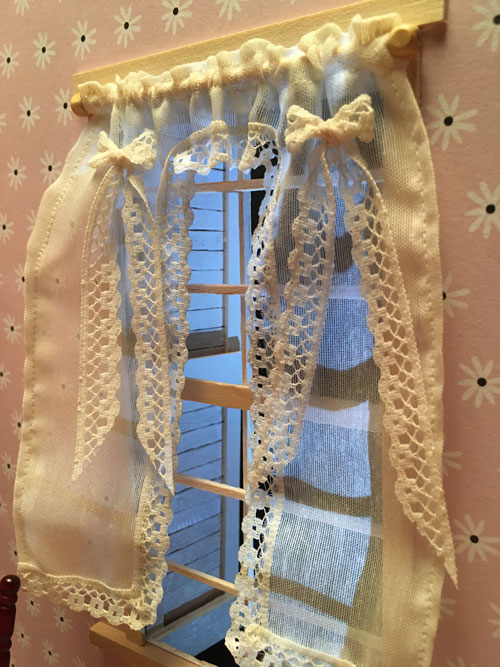
Next, I went back through the story and began gathering key pieces of the articles in the room from Dupin's description:
"The apartment was in wildest disorder—the furniture broken and thrown about in all directions…The bed had been thrown in the middle of the floor."
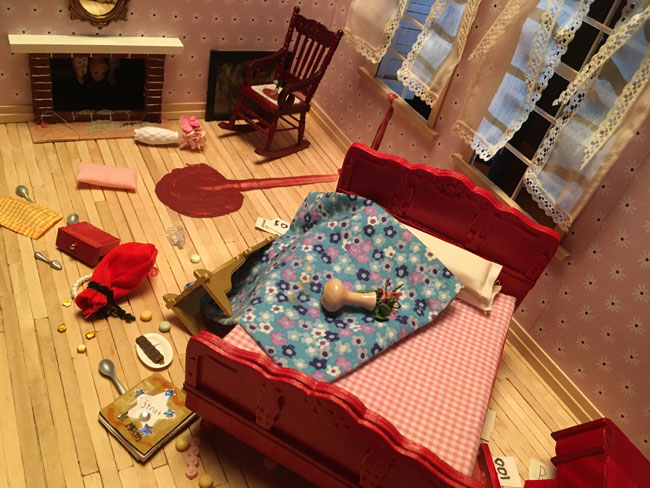
"On the chair a razor smeared with blood…on the hearth, two or three long tresses of gray hair…On the floor, four Napoleons, an ear-ring of topaz, three large spoons, three smaller of métal d'Alger, and two bags containing nearly four thousand francs in gold."
I purchased pieces of 1:12 scale bedroom furniture, mirrors, and other accessories to give the room a more realistic appearance. I also borrowed random bits and pieces from my daughter's dollhouses.
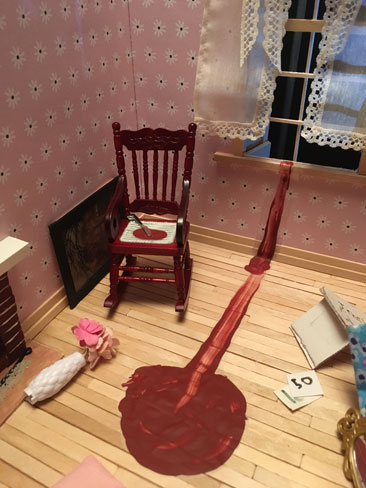

Microscopical Analysis of the Purloined Hair
After Dupin thoroughly sketches and documents the Rue Morgue crime scene, it is revealed to the narrator by Dupin that he has taken some tawny-colored hair from one of the victim's clutched hands—clearly breaking the chain of custody. We thought it would be interesting to add our own bit of historical fiction to Poe's story by inserting an element of trace evidence analysis. To examine the trace evidence from the crime scene, what might have been available to Dupin in 1841 Paris? Below is the discussion of the hair evidence…
"Besides, the hair of a madman is not such as I now hold in my hand. I disentangled this little tuft from the rigidly clutched fingers of Madame L'Espanaye."
"Dupin!" I said, completely unnerved: "this hair is most unusual—this is no human hair."
"I have not asserted that it is, said he…"
Notice what Dupin tells the narrator about the hair: "I have not asserted that it is" [not of human origin]. Dupin strikes me as the kind of person who would desire visual confirmation that the tawny hair is indeed not of human origin. The only way to visually confirm the hair's origin would be to compare it microscopically to known human hair.
In 1841, Dupin could have easily gained access to a microscope by paying a visit to one of Paris' most famous microscope manufacturers, Charles Chevalier. Chevalier's microscope shop, located at Palais-Royal, 158, was only a short, seven-minute walk from the Rue Morgue. In fact, early on in the story, the narrator talks of strolling with Dupin in the evening near the Palais-Royal.
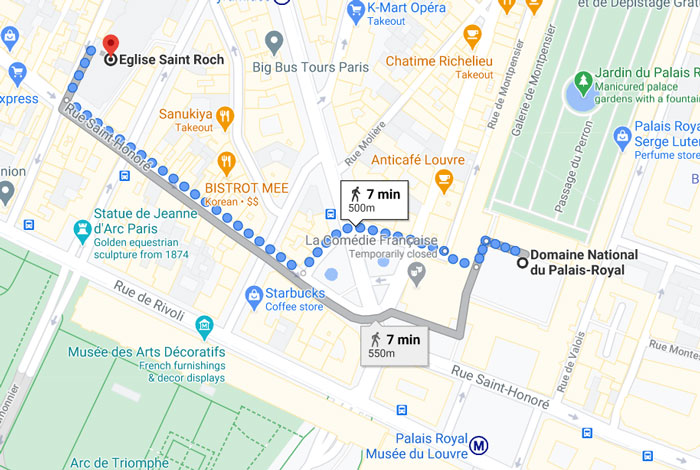
With this state-of-the-art resource nearby, Dupin could have visited Chevalier's shop and asked to evaluate one of his newly-minted Universal microscopes. This particular microscope featured doublet optics, which had recently been improved upon by Chevalier. At some point during their conversation, Dupin would have removed the tawny hairs from his pocket and asked Chevalier to allow him to take a quick look at some unusual hairs—an offer that no microscopist would turn down.
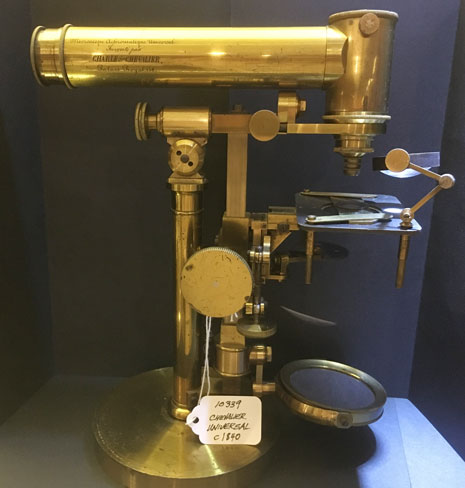
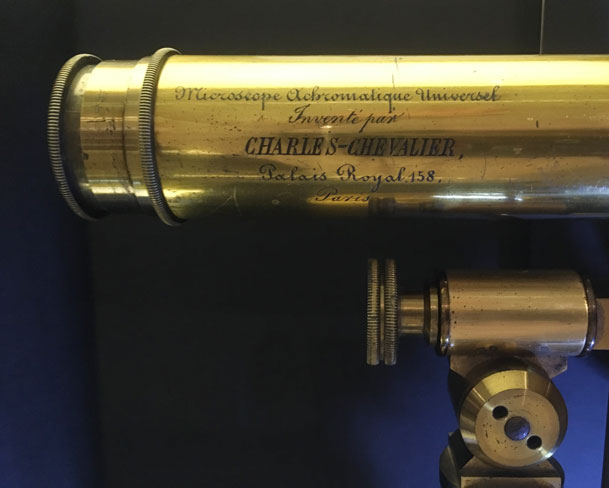
The tawny hair, along with the gray hair from the victim, would have been placed side by side between two circularly-cut pieces of sheet muscovite mica housed in an ivory or bone slider, then secured in the slider with a split brass ring and examined using Chevalier's Universal microscope. This was a common way at the time to prepare a specimen for microscopical examination. Then, as Dupin gazed through the eyepiece, he would begin to sketch the relative size of each hair while taking notes about the murderer's hair: its color, overall dimensions, characteristic scale pattern, and medullary ratio, as compared to the gray hair of the victim.
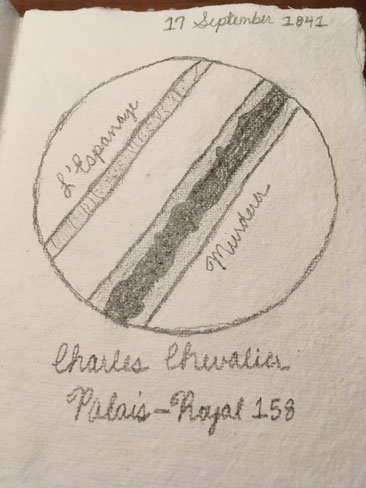
A Positivism Identification
This is the part of the post where I'll ask readers to hang with me a bit on this one. I'm sure positivism scholars and fans of Poe may not agree on my take of who Poe may have based his premier crime-fighting character C. August Dupin on, but here it goes…
I have a theory that Poe created Dupin as a pseudonym for a pioneering philosopher in Paris, Auguste Comte. Comte's philosophical thoughts on what he called positivism may have not only influenced Poe's writing, but Poe may have paid homage to him by creating his crime-solving character in the image of C. August Dupin.
Let's start with Paris, the setting where Poe's story takes place. During the period leading up to the publication of The Murders in the Rue Morgue, Comte had written and published a series of booklets called The Course in Positive Philosophy. These booklets were published between 1830 and 1842 and outlined Comte's philosophical thought, which he called positivism. For those of you not familiar with positivism thought, positivism scholar Eric Bredo sums it up this way…"In other words, science sticks to what is "positively" observed and limits explanations to generalizations about "succession and resemblance" of these events."
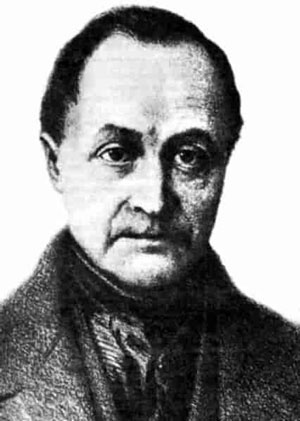
Poe, who was known to be fluent in Latin and French, could have easily acquired and read Comte's works on positivism. What first led me to this idea was Dupin's full name, C. August Dupin compared to that of Comte's—Auguste Comte.
Auguste Comte
C. August Dupin
So, you might think, big deal, their names are sort of similar. And at first, I brushed this off, too, as a coincidence, until I began thinking about the root of positivism thought and what it represents. Comte is considered by many to be the first philosopher of science. Poe's series of detective stories, beginning with The Murders in the Rue Morgue, were also a first of their kind—using reason, logic, and proof, rather than eyewitness accounts and hunches, to solve crimes. Perhaps Poe's Rue Morgue story was a first-time distillation of Comte's philosophical thought into a viable hypothetical story that uses the application of positivism to help solve a crime.
It is well documented that the writings of Comte went on to influence the forensic pioneer Alexandre Lacassagne, considered to be Paris' first criminologist scientist. In fact, one of Lacassagne's assistants was Edmond Locard, the famous French forensic scientist, later known for developing what is universally referred to as the Locard Exchange Principle.
Maybe, as a way of showcasing his intellectual powers and his newly-acquired positivist views, Poe ends the story in an interesting way. Half of the very last sentence is written in French, no less, and perhaps contains the most important takeaway of the story. "…the Prefect….I mean the way he has to deny what is, and explain what is not." Is this not a definite nod to Comte?
So there you have it, in a Nutshell, so to speak. Let us know what you think. Feel free to comment below or on our LinkedIn page.
I would like to thank Donald Brooks for access to the Brooks Microscope Collection, a vast array of historically-significant microscopes, rare books, and documents. Also, thanks to John Gustav Delly for his guidance and review of this article.
What Is Murders in the Rue Morgue the First of
Source: https://www.mccrone.com/mm/edgar-allen-poes-the-murders-in-the-rue-morgue-a-nutshell-study-of-unexplained-death-and-more/
0 Response to "What Is Murders in the Rue Morgue the First of"
Post a Comment